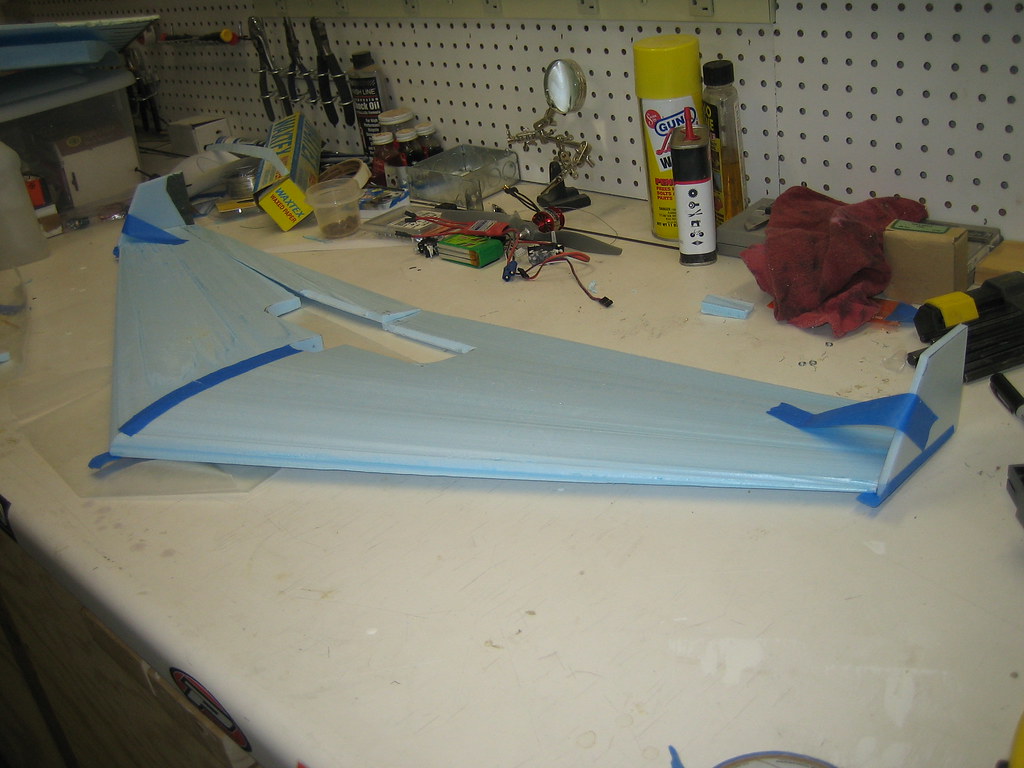After cutting the battery compartment holes it was very obvious the wing needed some sort of wing spar. I was hoping the prototype wouldn't need them, but after the cuts the wing had very low flexural rigidity. I chose to use some 1/8" x 1/2" scrap to fashion spars rather than carbon. I'll save the expensive carbon for the real high speed machine.
I used my soldering iron to cut the spar channels rather than the dremel. This worked, but the slots were a little too wide. I would have preferred tight-fitting channels. To fill the gap, rather than heavy epoxy or hot-glue I used white Gorilla Glue. I soaked the spars in water, wiped the excess off with a towel, then set them in the channels. I tried three techniques to apply the glue, one for each spar section:
- Apply gorilla glue to each side of the spar, then insert in the channel
- Place spar in channel, squirt glue on each side of spar
- Squirt glue into channel first, then place spar.
Once the spars were in place I put a stripe of "extreme" 3M packing tape over the top, to keep the Gorilla glue in place and to add additional strength.














